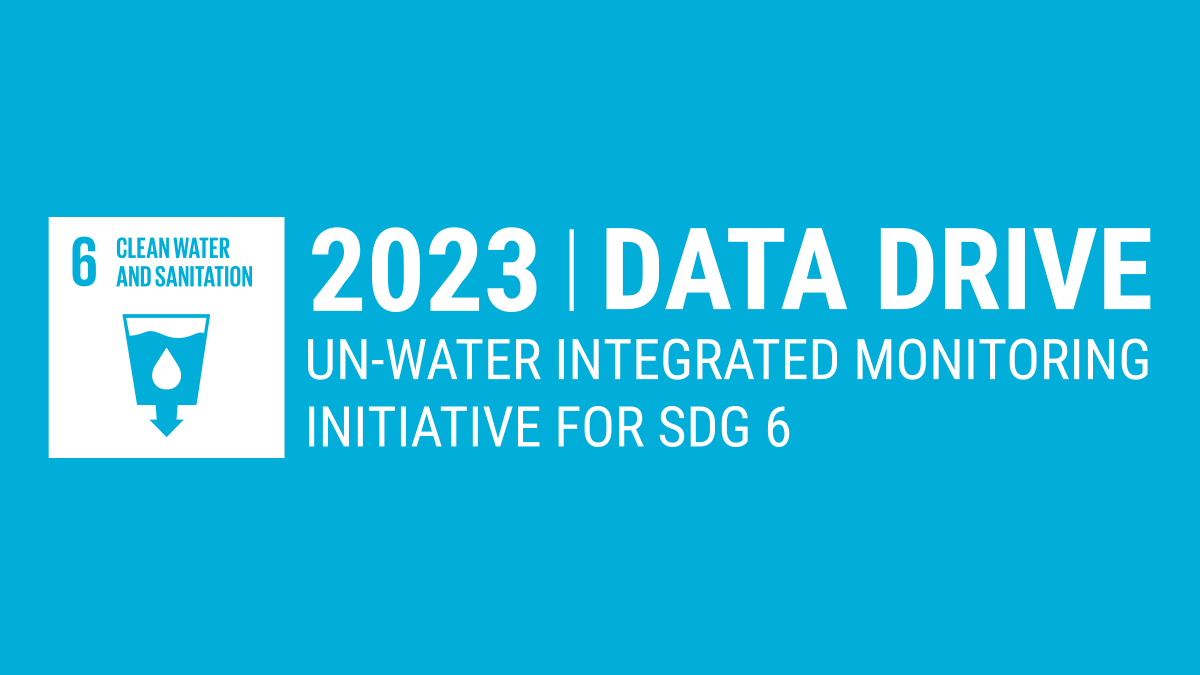2023 Data Drive
The 2023 Data Drive is part of the UN-Water Integrated Monitoring Initiative for Sustainable Development Goal 6 (IMI-SDG6): ‘Ensure availability and sustainable management of water and sanitation for all’. When countries adopted the SDGs, they committed to report data on SDG indicators to the UN to track progress and ensure accountability.
Credible and timely data are essential to the realization of the SDGs, as they help decision-makers to identify countries, people and sectors that are left behind, and set priorities for increased efforts and investments. The Data Drive involves countries collecting and reporting data on various SDG 6 indicators to multiple UN agencies, coordinated by UN-Water.

What is the 2023 Data Drive and why is it happening?
Since the adoption of the SDGs in 2015, there have been at least two rounds of global data compilation for all of the 12 SDG 6 indicators. For nine of the indicators, there are sufficient country data to produce reliable global baselines, but for three of them, sufficient country data are still lacking. On average, UN Member States have data on 8.5 out of 12 indicators. While this represents a major improvement compared to earlier years, a significant knowledge gap remains. And for indicators and countries with data, it is still important to provide regular updates, to capture progress and trends.
Therefore, in 2023 we are launching the third round of global data compilation on these seven SDG 6 indicators:
- total and industrial wastewater treatment (6.3.1)
- ambient water quality (6.3.2)
- water use efficiency (6.4.1)
- water stress (6.4.2)
- integrated water resources management (6.5.1)
- transboundary cooperation (6.5.2)
- ecosystems (6.6.1)
The custodian agencies for these indicators are contacting the relevant country ‘focal points’ with requests for data. This is the 2023 Data Drive.
As part of the drive, the custodian agencies will also offer support to the focal points in a variety of ways (see ‘Available support’ links), such as providing methodologies, helpdesks, webinars and workshops.
Who is involved in the 2023 Data Drive? Who are the ‘focal points’?
Within a country, data on water and sanitation are collected by a wide variety of stakeholders. For example, the Ministry of Environment may look after data on ambient water quality, whereas water use may be under the Ministry of Agriculture. Water basin associations may monitor integrated water resources management and transboundary cooperation. And the national statistical office has overall responsibility for SDG reporting.
Within each country, for each SDG indicator there is a specific ‘focal point’ (sometimes more than one) who is the main point of contact for the custodian agencies. These focal points are the main players in the 2020 Data Drive, as they will receive the request for data from the custodian agencies. Often, the focal points are working with colleagues within and outside their organization to compile the data.
Given the many stakeholders, it is recommended that countries also identify an overall focal point who can work with indicator-specific focal points and promote coordination and collaboration across the indicators. In the 2020 Data Drive, the overall focal points are copied in to the request for data from the custodian agencies to the indicator-specific focal points, to ensure that they have a complete picture of all ongoing data compilation processes in their country.
How does the data get compiled in practice?
The process for compiling country data varies across the indicators. In most cases, a data request is sent to the national focal point for the indicator, who is encouraged to submit data through a specific questionnaire. For some indicators, the custodian agencies look for already-published data in official open sources and from the national statistical office. Regardless of the compilation process, all final data to be submitted to UNSD will first be validated and approved by the country.
When receiving the request for data, the country focal points will also get information about how to collect and report the data, according to indicator-specific methodologies. The custodian agencies will also explain what support that is available to the country focal points.
The validated data are then submitted by the custodian agencies to the United Nations Statistics Division (UNSD), to inform follow-up and review at the annual High-Level Political Forum on Sustainable Development (HLPF). The data are also published in indicator-specific databases as well as the SDG 6 Data Portal.
What about the other indicators?
The custodian agencies contact countries on a regular basis with requests for data. The frequency and timing of these requests varies across the 12 SDG 6 indicators; for some indicators it makes sense to report every to every second year, for others it is sufficient every three to four years.
The custodian agencies for the indicators on drinking water (6.1.1), sanitation (6.2.1a), hygiene (6.2.1b) and domestic wastewater treatment (6.3.1) completed their country consultations in March 2023, and the reporting on international cooperation (6.a.1) and community participation (6.b.1) was concluded in November 2022.
You can find an overview of the process and timeline for all indicators here.

